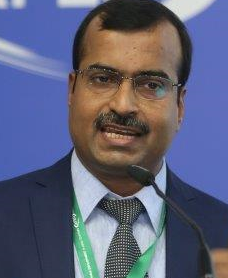In a nutshell
Inclusive and sustainable development depends on economies being structured to achieve high productivity, to deliver decent work that is widely available and to practice the careful stewardship of natural resources.
Fiscal policy needs to play a greater role to build a productive economy, for example, guiding investments to strategic sectors and in higher education and research to help drive innovation and productivity.
Fiscal choices also need to work in tandem with other policy reforms, including those related to industry, trade, employment and exchange rates.
One of the stubborn stylised facts about the Middle East and North Africa is that its economic performance closely tracks fluctuations in oil prices, particularly in the oil-rich countries of the region. The lack of structural transformation associated with oil-led economic structures and growth explains much of the economic volatility and the weak relationship between growth, employment and poverty reduction in most of the Arab world (ESCWA, 2016a; Sarangi, 2015; ILO and UNDP, 2013).
The region’s moderate economic growth over the decades prior to the global economic slowdown in 2008 – and the slow recovery in the following years – did not significantly improve the incomes of the poor. Nor did it generate enough decent work for the growing educated labour force.
Since 2011, several parts of the region have faced conflicts and crises that have adversely affected growth and fiscal space. These have led to a net loss of an estimated $614 billion in economic activity, and an aggregate fiscal deficit of $243 billion during the period from 2011 to 2016 (ESCWA, 2016b). That estimate may have risen to more than $800 billion due to additional losses since 2016.
Another major shock has been the sharp fall in oil prices in 2014 and the moderate ‘new normal’ level of oil prices since then. Despite the recent spike in oil prices, the new normal has had an overall negative impact on the oil-rich countries in terms of their growth, current account balances and fiscal space for development expenditure (ESCWA, 2017; Sarangi and El-Ahmadieh, 2017).
Lack of structural transformation, not enough decent work
Inclusive and sustainable development depends on economies being structured to achieve high productivity, to deliver decent work that is widely available and to practice the careful stewardship of natural resources.
Arab economies mostly fall short on all of these measures. While economic diversification has taken place in the economies of both oil-rich and oil-poor countries, they have mainly yielded poorly paid jobs in the informal sector. Labour productivity has barely budged, economic growth has been sluggish and benefits have been unevenly shared.
In oil-rich countries such as Qatar and Saudi Arabia, mining and utilities make significant contributions to the whole economy but provide only a small share of employment (ESCWA, 2017). Outside the oil industry, which skews largely towards construction, hotels and restaurants, financial services and ‘other services’, job opportunities are more diverse, but they mainly absorb cheap, low-skilled labour from Asia.
In oil-poor countries such as Egypt and Morocco, agriculture and ‘other services’ together, which largely fall under informal sector activities, account for the majority share of employment since 2000. Their employment share continues to be higher than their share in value added, and there has been an increase in the share of employment in construction, trade and transport sectors, indicating that people have moved into work in non-farm sectors or for service jobs (ESCWA, 2017).
But labour movement from farms to non-farm sectors is associated with a decline in labour productivity growth, which suggests that most new employment is informal, poorly paid and low in productivity (Sarangi et al, 2017).
Labour productivity remained sluggish
The pattern of evolution of sectoral output and employment suggests that labour productivity – measured by growth in output per worker – has remained largely low or negative in most sectors in both oil-poor and oil-rich countries.
Declining labour productivity in manufacturing and most other non-farm sectors, despite labour moving from farms to non-farm sectors is a worrying trend, which indicates a concentration of jobs in largely lower-end industries or services (Sarangi et al, 2017). This pattern of labour productivity growth across countries is in stark contrast to the pattern observed in emerging market economies elsewhere in the world.
Furthermore, the growth of labour productivity can be decomposed into two parts (McMillan and Rodrik, 2011):
- One, due to productivity growth ‘within’ a sector through capital accumulation, technological change, or reduction of misallocation across plants.
- Two, due to a move of labour ‘across’ sectors, from low-productivity sectors to high-productivity sectors, thereby increasing overall labour productivity in the economy.
Evidence from countries such as Jordan and Morocco suggests that sluggish average labour productivity growth is mainly due to the pulling down effect of shifting labour across sectors. While labour productivity growth is noted positive due to ‘within’ the sectors effect, reallocation of labour across sectors (the ‘structural’ effect) tends to show a negative influence on labour productivity growth (ESCWA, 2017).
There are similar results for Egypt (Morsy et al, 2015). Together, this further substantiates the weak correlations between changes in employment across sectors and labour productivity growth.
This pattern of structural change in oil-rich and oil-poor countries where shifts in employment towards non-oil sectors are often associated with declining productivity growth cannot be attributed to the transformation of economies.
Rather, it appears that the countries are locked in a ‘low productivity trap’. Existing industries, mainly in the services sector, generate high demand for low-skilled workers, and therefore it is no surprise that unemployment in Arab countries is especially high among the most educated workforce.
Overcoming low productivity requires transformational changes in macro-fiscal policy
There are several reasons for falling into the trap of low productivity, including the political economy context, the lack of an enabling competitive environment, low absorptive capacity and overvalued exchange rates (Malik, 2016; Selim and Zaki, 2014; El-Badawi and Soto, 2011).
The cumulative effect of these factors has been ‘premature deindustrialization’ or ‘turning into service economies without having gone through a proper experience of industrialization’ (Rodrik, 2015). This process, in which developing economies ‘run out of industrialization opportunities sooner and at much lower levels of income compared to the experience of early industrializers’, has led to a major impact on economic diversification and employment, especially in manufacturing industries (Rodrik, 2015).
The dominance of China and India in global value chains has reinforced this trend, forcing many developing economies, including those in the Middle East, to focus increasingly on services.
But high value added service sectors (such as finance and information technology) require specialised skills and have limited employment generation capacity, especially for low-skilled workers. Hence, the services sectors that offer low-skilled jobs constitute the core of the growth of services in these economies (Rad, 2018).
In this context, as Rad (2018) argues, rapid technological change and automation are likely to have a more onerous impact on the economies of the Middle East since their economic structures will limit their fall-back employment options as automation kicks in.
What is to be done? While the World Bank’s 2019 World Development Report recommends deregulation of labour markets, the International Labour Organization (ILO) criticises such an approach by arguing, correctly, that its net impact will be to leave many workers with greater insecurity of employment and income (ILO, 2018).
Hence, the ILO’s emphasis on instruments such as minimum wages to ensure that ‘workers are paid at least minimally decent wages’ is a plausible first step (ILO, 2018). Is there fiscal space to support this policy move in Arab countries? ESCWA (2017) argues that this is the case with corrective fiscal policy actions.
A greater role for fiscal policy
Fiscal policy needs to play a greater role to build a productive economy to fix an endemic problem on the labour demand side (ESCWA, 2017). Across the region, inappropriate public investment choices and inadequate investment in high-quality education and research and development have restrained structural transformation and thus decreased the demand for skilled labour.
In the oil-rich countries, high investments in infrastructure have not contributed significantly to developing higher productivity sectors outside oil. Further, by bringing in large numbers of low-skilled migrant workers, mainly for services related to construction and the hotel industry, labour policies have discouraged investment in advanced education and competitiveness, segmented the labour market and reduced the pool of people who might invigorate new industries or launch innovations as entrepreneurs.
In the oil-poor countries, public spending on investments has been weak, particularly after the contractionary public expenditure policies adopted by these countries since the 1990s.
Furthermore, public expenditure has weighed on the side of fuel subsidies, public sector salaries, interest payments, military expenditure and so on, which limits fiscal space for investment in productive sectors. This low investment has hampered diversification into higher-end manufacturing activities although the oil-poor countries are labour-rich.
Overall, the region needs transformational changes in macro-fiscal policy orientation in order to overcome the low productivity trap across economic activities that are largely informal, to generate millions of new employment opportunities for the growing educated youth and to improve the labour share of income to reduce poverty.
Investing in higher education and research is important for driving innovation and productivity (ESCWA, 2017). At the same time, fiscal policy needs to guide investments to strategic sectors towards achieving economic transformation and competitiveness. Fiscal choices also need to work in tandem with other policy reforms, including those related to industry, trade, employment and exchange rates.
Further reading
El-Badawi, I, and R Soto (2011) ‘Fiscal Regimes In and Outside the MENA Region’, ERF Working Paper No. 654.
ESCWA, United Nations Economic and Social Commission for Western Asia (2016a) ‘Arab Development Outlook: Vision 2030’,E/ESCWA/EDID/2015/3.
ESCWA (2016b) ‘Survey of Economic and Social Developments in the Arab Region 2015-2016’, E/ESCWA/EDID/2016/1.
ESCWA (2017) ‘Rethinking Fiscal Policy for the Arab Region’, E/ESCWA/EDID/2017.4
ILO (2018) ‘ILO expresses concern about World Bank report on future of work’, 12 October.
ILO and UNDP (2013) ‘Rethinking Economic Growth: Towards Productive and Inclusive
Arab Societies’, ILO.
Malik, A (2016) ‘The Political Economy of Macroeconomic Policy in Arab Resource-Rich Economies’, ERF Working Paper No. 1034.
McMillan, MS, and D Rodrik (2011) ‘Globalization, Structural Transformation and Productivity Growth’, NBER Working Paper No. 17143.
Morsy, H, A Levy and C Sanchez (2015) ‘Growing without Changing: A Tale of Egypt’s Weak Productivity Growth’, ERF Working Paper No. 940.
Rad, ST (2018) ‘Jobs and Livelihoods during the Fourth Industrial Revolution Challenges for the Middle East & North Africa Region’, School of Oriental and African Studies (SOAS) University of London.
Rodrik, D (2015) ‘Premature Deindustrialization’, Kennedy School of Government.
Sarangi, N (2015) ‘Economic Growth, Employment and Poverty in Developing Economies: A Focus on Arab Region’, ESCWA Working Paper E/ESCWA/OES/2015/WP.4.
Sarangi, N, K Abu-Ismail and V Gantner (2017) ‘Fiscal Policy and Structural Transformation in the Arab Region: What are the Pathways’, ESCWA Working Paper, E/ESCWA/EDID/2017/WP.7.
Sarangi, N, and L El-Ahmadieh (2017) ‘Fiscal Policy Response to Debt in the Arab Region’, ESCWA Working Paper E/ESCWA/EDID/2017/WP.6.
Selim, H, and C Zaki (2014) ‘The Institutional Curse of Natural Resources in the Arab World’, ERF Working Paper No 890.



